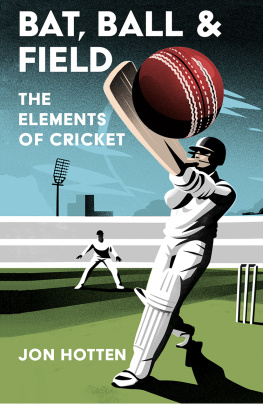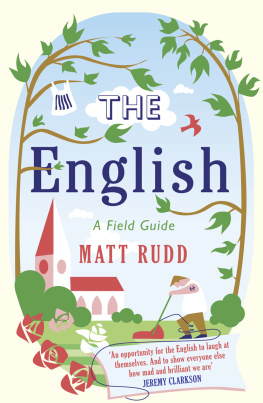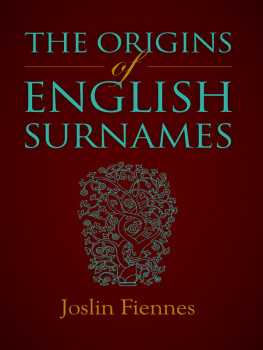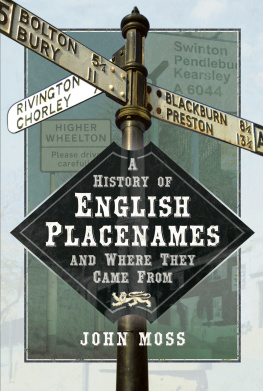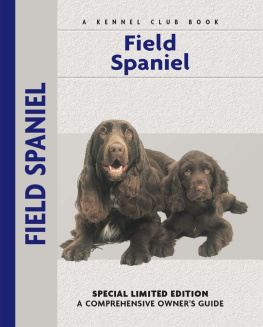A History of English Field-Names
Approaches to Local history
General Editor: David Hey
Local history has been a spectacularly successful growth area in recent years, amongst professional historians and enthusiastic amateurs alike. In this new series, Longman will be publishing books on particular themes and aspects of the subject, written by experts for a student and lay readership. It will include practical volumes that explore the methodology of local research, and volumes that themselves illuminate the hidden lives of ordinary people in times past.
Already published:
A History of British Surenames Richard McKinley
A History of English Field-Names John Field
Oral History and the Local Historian Stephen Caunce
Researching Local History Michael A. Williams
First published 1993 by Addison Wesley Longman Limited
Second impression 1998
Published 2013 by Routledge
2 Park Square, Milton Park, Abingdon, Oxon OX 14 4RN
711 Third Avenue, New York, NY 10017, USA
Routledge is an imprint of the Taylor & Francis Group, an informa business
Copyright 1993, Taylor & Francis.
All rights reserved. No part of this book may be reprinted or reproduced or utilised in any form or by any electronic, mechanical, or other means, now known or hereafter invented, including photocopying and recording, or in any information storage or retrieval system, without permission in writing from the publishers.
Notices
Knowledge and best practice in this field are constantly changing. As new research and experience broaden our understanding, changes in research methods, professional practices, or medical treatment may become necessary.
Practitioners and researchers must always rely on their own experience and knowledge in evaluating and using any information, methods, compounds, or experiments described herein. In using such information or methods they should be mindful of their own safety and the safety of others, including parties for whom they have a professional responsibility.
To the fullest extent of the law, neither the Publisher nor the authors, contributors, or editors, assume any liability for any injury and/or damage to persons or property as a matter of products liability, negligence or otherwise, or from any use or operation of any methods, products, instructions, or ideas contained in the material herein.
ISBN 13: 978-0-582-08158-1 (pbk)
British Library Cataloguing-in-Publication Data
A catalogue record for this book is
available from the British Library
Library of Congress Cataloging-in-Publication Data
Field, John, 1921
A history of English field names / John Field.
p. cm. (Approaches to local history)
Includes bibliographical references and index.
ISBN 0-582-08157-2. ISBN 0-582-08158-0 (ppr)
1. Field names England History. 2. Names, Geographical
England. 3. England History, Local. 4. Names, English.
I. Title. II. Series.
DA645.F525 1993
914.20014 dc20 92-32747
CIP
Contents
In recent years a quiet revolution has taken place in the study of British place-names. Yet it was not until the publication of Margaret Gellings book Signposts to the Past (1978) that the general public became aware of the substantial shift in scholarly opinion on how place-names should be interpreted. Many of the older works that were once thought of as standard now have to be treated with care. Interpreting place-names is a minefield for the unwary. There is little that the amateur historian can do to contribute to the debate that is conducted by the members of the English Place-Name Society and landscape historians, for the interpretation of settlement names requires a deep knowledge of old languages. All that he or she can do is to try to keep up with modern findings, exemplified by Margaret Gellings next book, Place-Names in the Landscape (1984).
But with field-names it is different. Here the amateur comes into his own. Few documents record field-names so far back in time that only a trained linguist can be trusted to interpret the evidence. With field-names that were coined in much later periods the historian who knows a locality intimately is in a far better position than the linguist to offer a convincing explanation. Every parish has a large collection of field-names recorded on old maps, surveys, deeds and numerous other documents. Even places which no longer have any fields, such as our great Victorian cities, have records of field-names from earlier times and often have street-names which commemorate the names of former fields.
It is a happy coincidence that the member of the English Place- Name Society who has established his reputation by the study of field-names should bear such an appropriate surname. John Field is already well known to local historians for his English Field-Names, a Dictionary, first published in 1972. Field on Field-Names has become one of the local historians best-known reference books. The present work takes the subject much further. It shows us how field-names are not only fascinating in their own right but are a form of evidence that can be tapped to illustrate many of the concerns of the local historian. Whereas the dictionary is a quick and effective guide to individual names, in this book John Field draws on his unrivalled experience to demonstrate how field-names can be used collectively to help to explain topics as diverse as clearing woods, tanning leather, flavouring food or perambulating boundaries.
Collecting all the field-names of a single parish has proved an attractive labour of love for individual local historians and for groups of like-minded people. Much good work has been done, but as yet only a small proportion of the thousands of parishes throughout the land has been covered in this way. The county volumes of the English Place-Name Society did not originally include field-names, but the ones published in the last three decades have been increasingly concerned to record this material, even if little space is devoted to its interpretation. The counties that have not been tackled by the EPNS, and those which were covered by the Societys early volumes, have often not even reached the collecting stage as far as field-names are concerned.
In this book John Field raises our sights from the collection and the interpretation of individual names, while making clear the importance of these preliminary tasks. His approach is to lead us on from an initial curiosity and delight in the more extravagant fieldnames to a sense of their importance to the local historian in so many endeavours. His numerous examples, drawn from each quarter of the land, suggest that every parish will turn up much of interest. Field-names are clearly an important source of evidence for us all.
DAVID HEY
The growth of interest in local history and other studies during the past half-century has generated a much wider acquaintance with field-names. However, although it is no longer necessary to explain that every field has a name, there is still a tendency to regard the meaning of all but the most obviously self-explanatory names as anybodys guess. Systematic investigation has been going on for many years and the published results obviate the need for conjecture about large numbers of names. The present work arose from the authors conviction that there is a greater continuity between the older nomenclature and the more recent names than is often asserted. The book also aims to indicate how further research on the contexts of the occurrence of many names can contribute to a greater understanding of their significance. Methods of interpretation are also discussed, partly to show that this is not a mysterious process, but chiefly to enable readers to apply similar techniques, however tentatively, to other field-names they may encounter during the course of their own research.




